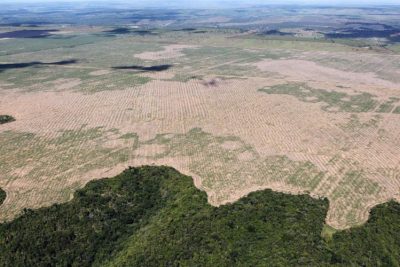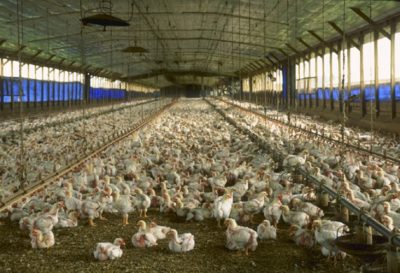What are the major agricultural impact factors?
PDFSince the beginning of agriculture in the Neolithic period, about half of the non-desert terrestrial habitats have been converted to agricultural land, among which three quarters to pasture, for domesticated animals, and the remaining quarter – the most fertile land – to cultivated fields (e.g. Ellis et al.[1]).
1. Spatial expansion, artificial selection

- Ecological and biogeographical impacts: impacts on the ecological communities of the conversion of ancient (so-called ‘natural’) and other ecosystems into human-dominated agricultural ecosystems (so-called agroecosystems or agrosystems). Note that these impacts of land use changes include the indirect impacts of climate change related to the conversion of forested areas to agricultural areas;
- Genetic and demographic (demogenetic) impacts on the species concerned of domestication, i.e. the so-called artificial selection of animal and plant populations by breeders and farmers for their exploitation.
While it has slowed and then stopped in Western Europe and other temperate regions over the past century, the spatial expansion of agriculture is far from over. Associated with a global intensification of agriculture (see below), the conversion of forests and other (semi)natural habitats into fields, plantations and pastures has been going on for several decades in the tropics, at a current rate of about 5.5 million hectares per year [2]. This expansion dynamic responds to the increasing international demand for agricultural products for multiple uses, including livestock feed and agrofuel production (coupled with poor regulation of international trade), as well as to the progressive degradation of agricultural soils through erosion, pollution, salinization, aridification, …
2. Agricultural intensification
In the 1950s, other strong pressures on biodiversity (and the climate) appeared, linked to the intensification of agriculture during the “Green Revolution”. These are essentially:
- The increasing use of synthetic fertilizers, pesticides and other chemical inputs industrial products,
- The reduction of the number of cultivated varieties, by plot (monoculture) and by region (standardization of crops),
- The mechanization-standardization of techniques and the sophistication of agricultural machinery,
- The increase in the size of cultivated plots (accessible to agricultural machines), with the suppression of hedges and groves,
- The increasing use of irrigation and water drainage systems on large cultivated areas,
- All other techniques involving the replacement of local ecological networks and ‘infrastructure’ (and labor) with industrial inputs.

This intensification of agriculture has been accompanied by an intensification of livestock farming, based in particular on the feeding of animals with imported corn, soy and meal. This intensive livestock farming method implies not only extensive changes in the use of distant soils, for the cultivation of imported plants (see below), but also a significant degradation of the living conditions of domestic animals, raised in captivity on small surfaces.
In addition, some new techniques for improving (sic) of crops and livestock, such as transgenesis, have been developed for this agricultural intensification, with controversial impacts not only on genetically manipulated and cultivated populations but also on other populations, species and ecological communities inhabiting neighboring agrosystems and habitats [4].
3. Trade intensification
With the evolution and globalization of the dominant production, trade and consumption patterns in rich countries, the impacts of agriculture have changed in dimension. Initially intended for local and regional food, agricultural production is now largely dedicated to export [5], with increasing consumption pressure from developed and emerging countries towards distant ecosystems, often located in tropical regions – in countries often poor in currency but rich in biodiversity [6].
According to Kinnunen et al [5], local agriculture of cereals and fodder alone could today only satisfy about 30% of the world demand. This increase and delocalization of demand for agricultural products not only contributes to the current expansion and intensification of agriculture in tropical countries, but also goes hand in hand with the evolution, globalization and standardization -beyond agriculture- of agri-food systems, and thus of market chains associated with agriculture, which constitute a fourth major impact factor.
This includes the impacts on the biosphere of the market chain linked to the production and transformation, storage and transport, distribution and recycling, not only of more or less transformed agricultural products placed on the market, but also of the materials and products entering this market chain, whether they are chemical (fertilizers, pesticides, antibiotics, ‘fossil’ hydrocarbons, agrofuels, etc.), ‘physical’ (e.g. plastic packaging) or mechanical (e.g. agricultural machinery, trucks, etc.).
These four major impact factors linked to the expansion and intensification of agriculture, i.e. land use changes, selection and genetic manipulation of domesticated populations, intensification of agricultural practices, and trade intensification, combine their direct and indirect effects on biodiversity and socio-ecosystems, in a “ouroborian” dynamic (see Impacts of agriculture on biodiversity and ecosystem functioning). The share of agriculture in global greenhouse gas (GHG) emissions of ‘anthropogenic’ origin affecting biodiversity, for example, refers not only to changes in land use for agriculture (about 7 Gt eq. CO2/an, cf. IPCC [7]), but also to additional GHG emissions related to the production, transport, use and recycling of agricultural products and the many chemical, physical and mechanical ‘inputs’ of agriculture mentioned above… which are not easy to assess!
Notes and references
Cover image. Royalty-free image (https://www.uidownload.com/en/vector-mzgbd/download)
[1] Ellis E. C., A.H.W. Beusen & Klein Goldewijk, 2020. Anthropogenic Biomes: 10,000 BCE to 2015 CE. Land 9, 129, 1-19. doi:10.3390/land9050129.
[2] Keenan, R. J., G. A. Reams, et al. 2015. Dynamics of Global Forest Area: Results from the FAO Global Forest Resources Assessment 2015. Forest Ecology and Management 352: 9-20.
[3] Millennium Ecosystem Assessment (MEA), 2005. Ecosystems and Human Well-being: Synthesis, Island Press, Washington DC.
[4] Graef F. et al., 2012. A framework for a european network for a systematic environmental impact assessment of genetically modified organisms. BioRisk 7: 73-97.
[5] FAO, 2020. The state of food security and nutrition in the world. Rome: Food and Agriculture Organization of the United Nations – Kinnunen P. et al., 2020. Local food crop production can fulfill demand for less than one-third of the population. Nature Food 1, 229-237. https://www.nature.com/articles/s43016-020-0060-7
[6] Cahen-Fourot L., 2020. Contemporary capitalisms and their social relation to the environment. Ecol. Economics 172, 106634.
[7] IPCC 2019. Climate and land use changes Report.




